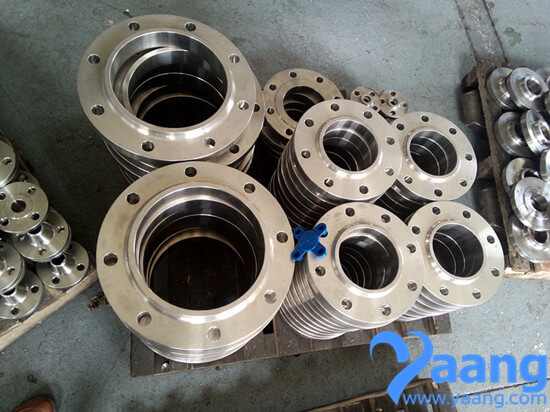- SITEMAP
- CONTACT US
- 8618267732328
News
Credibility ,the lifeblood of enterprise!
- Fittings
- Butt Welding Fittings
- Forged Fittings
- 180 Degree Elbows
- 90 Degree Elbows
- 60 Degree Elbows
- 45 Degree Elbows
- 30 Degree Elbows
- Equal Tee
- Reducing Tee
- Concentric Reducer
- Eccentric Reducer
- Lap Joint Stub End
- Outlets
- Cap
- Bend
- Cross
- Coupling
- Stainless Steel Lateral Tee
- Bellows Expansion Joints
- Flexible Metal Hose
- Non-Standard/Custom Fittings
- Bleed & Flushing Rings
- Types of Flanges
- Anchor Flanges
- Blind Flanges
- Expander Flanges
- High Hub Flanges
- Lap Joint Flanges
- Long Weld Neck Flanges
- Nipoflanges
- Orifice Flanges
- Plate Flanges
- Ring Type Joint Flanges
- Reducing Flanges
- Slip On Flanges
- Socket Weld Flanges
- Spectacle Blind Flanges
- Square Flanges
- Spades & Ring Spacers
- Threaded Flanges
- Welding Neck Flanges
Selection of Stainless Steel for Handling Chlorine Cl2 and ClO2

Chlorine is a powerful oxidising agent. It normally occurs as a gas but can be liquefied under pressure at ambient temperature. As a dry gas it does not tend to be aggressive towards stainless steel, but as either a damp gas or dissolved in water it can be a corrosion hazard.
Chlorine readily forms chlorides when in contact with gases such as methane, hydrogen sulphide and ammonia. Hydrochloric acid HCl can also be formed by these reactions.
Chlorine dissolves readily in water forming hydrochloric and hypochlorous (HOCl) acids, which is very corrosive mixture.
Chlorine can also assist in the oxidation of dissolved gasses, such as sulphur dioxide (SO2), forming sulphuric andhydrochloric acid in water. It is these oxidising properties that make chlorine an aggressive component in waters.
Corrosion resistance of stainless steelChlorine in contact with water and as a dissolved gas, sometimes found in water treatment applications, is potentially aggressive to stainless steel.
Localised crevice & pitting corrosion attack is a hazard in water and stress corrosion cracking (SCC) can be an additional hazard in damp chlorine gas, if the temperature is high enough.
Condensates formed over chlorinated water in storage tanks have been known to result in staining or pitting to stainless steels. Improvements to ventilation in such situations should help reduce the risk of attack.
When using chlorine as a sterilizer or sanitiser in contact with type 316 stainless steel items, a maximum of 15-20 ppm (mg/lt) 'free' chlorine is suggested, for maximum times of 24 hours, followed by a thorough chlorine free water flush. As with any additions, thorough dilution around the injection point is important to avoid localised 'over-concentration' problems.
Residual chlorine levels in waters of 2ppm maximum for 304 stainless steel and 5ppm for 316 stainless steel types should not normally be considered a crevice corrosion hazard.
Chlorine dioxide as a sanitiser in contact with stainless steelChlorine dioxide (ClO2), occurs naturally as a gas, but is normally dissolved in water, as the gas is highly explosive. Although a powerful oxidiser, unlike chlorine it does not breakdown to release chlorides. The chlorine and oxygen work together tending to form chlorites in the oxidation process. Although the chlorite can break down to form chlorides, it is a weaker oxidising agent than the chlorine dioxide and so can be expected to be less of a hazard to stainless steel when used as a water sanitiser.
Source: Yaang Pipe Industry Co., Limited (www.yaang.com)

Tel No:+86-18267732328 / Email:[email protected]
Address:Longwan District, Wenzhou, Zhejiang Province, China.
Copyright Notice © www.yaang.com Yaang Pipe Industry Co., Limited All rights reserved.
Yaang Pipe Industry Co., Ltd. is an international supplier of piping solutions for flange, butt welding fittings, socket welding fittings and threaded fittings. Our products are widely used in different industrial fields, including oil and gas, chemical industry, petrochemical industry, power plant, pulp and paper industry, environmental and water conservancy engineering, engineering projects, etc.





